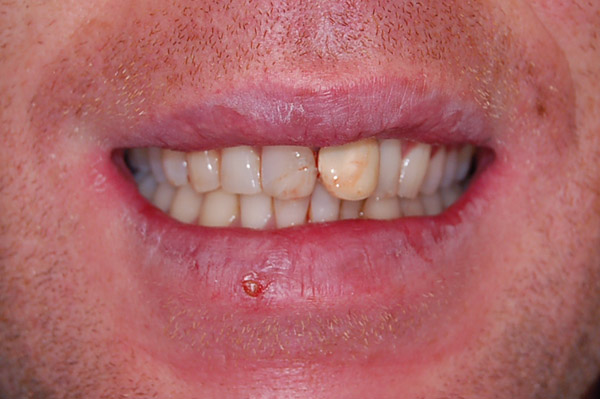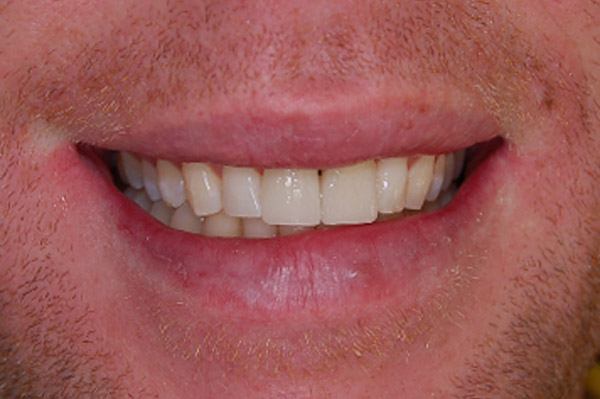Crowns & Bridges in Buenos Aires, Argentina
.
.
If you already know about dental crowns & bridges, below is a selection of FAQ we have received from our patients, about having crowns & bridges done in Buenos Aires:
.
• How many days will I need to stay in Buenos Aires?
• Which dental crown system do we use?
• How long can dental crowns last?
• Do I need to have the x-rays taken before coming to Dental Argentina?
.
.
How many days will I need to stay in Buenos Aires?
With our CEREC technology we can do a full porcelain crown in one hour.
If you need just a few porcelain crowns, we can do the treatment in one or two days, as we hace the CEREC technology in our office.
If you need several crowns, for example a full mouth restoration, we need less than 7 days to finish the treatment.
.
.
Smile #1: Three porcelain crowns (6 hours required. Same day treatment)
.
Before
.
.
.
Smile #2: Full mouth crowns due to severe bruxism (4 days required)
.
Before
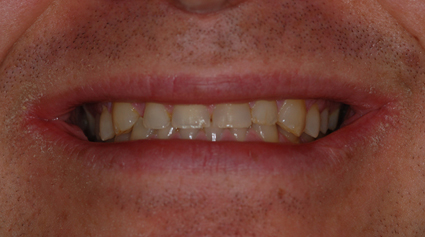
.
After
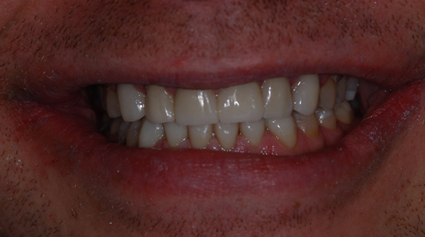
.
.
.
Smile #3: Full mouth crowns due to severe bruxism (4 days required)
.
Before
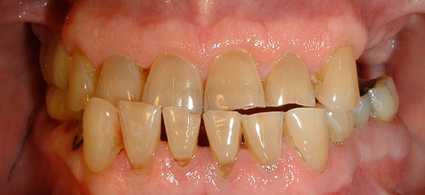
.
After
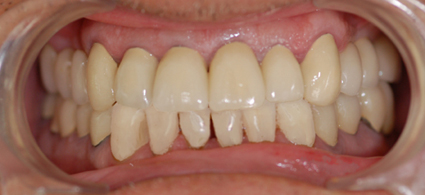
.
.
Which dental crown system do we use?
For the standard porcelain fused to metal crown we use an imported dental Alloy cover by Vita porcelain.
For full porcelain crowns we use the VITA CEREC, Empress and Ceramco system.
For zirconia crowns, we use CERCON or CERAMILL crowns.
.
.
Smile #4: Full porcelain crowns on 24 teeth
.
Before
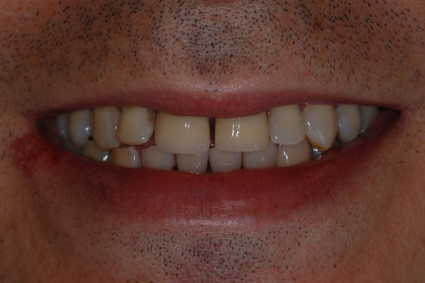
.
After
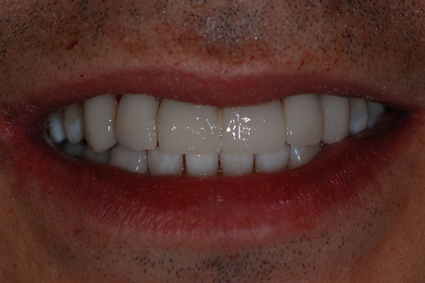
.
.
Do I need to have the x-rays taken before coming to Dental DAS Argentina?
It’s not necessary. We can take digital X-rays in the office. Also we have a high definition panoramix x-ray in our office.
.
.
How long can dental crowns last?
The crown’s lifespan depends on the forces you expose the crown to (such as chewing, biting, accidental trauma, or tooth grinding) and how well you keep the tooth to which it is cemented free of dental plaque.
It is quite reasonable to expect that a dental crown will last 15 years, or even longer, if you follow proper care instructions. Crowns over implants tend to last longer than crowns over teeth.
.
.
.
Smile #5: Full porcelain crowns – Smile makeover
.
Before
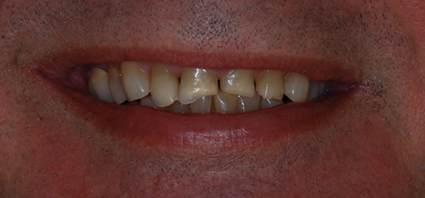
.
After
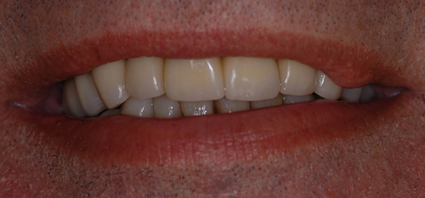
.
.
.
Basic information about porcelain crowns
.
Crowns are utilized to repair heavily stained or severely damaged teeth. They are able to restore the original shape, color and function of the teeth.
Bridges are used to replace missing teeth, supported by the surrounding teeth. Today, however, the use of bridges over natural teeth is not as frequent due to the development of dental implants.
.
.
Smile #6: Three Unit bridge
.
Before
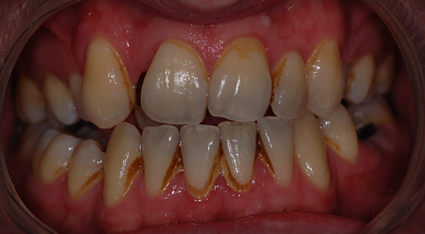
.
After
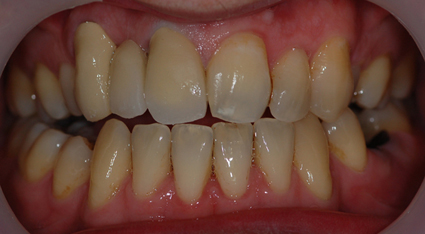
.
.
.
FAQ’s about Crowns
.
How can dental crowns be used to restore the cosmetic appearance of teeth?
In which circumstances is it desirable to have a dental crown placed?
What are dental crowns made of?
When do old dental crowns need to be replaced?
How can dental crowns strengthen teeth?
What is the relationship between dental crowns and root canal treatment?
What happens if you don’t protect a tooth with a dental crown?
What precautions should be taken with a temporary dental crown?
.
.
.
What is a crown?
A tooth is composed of two portions, the root and the crown. The root lies below the gum line, and the crown is above the gum line. If the natural crown has broken, is worn down to an excessive degree, is heavily stained, or has large portions destroyed by decay, the tooth needs an artificial crown to restore its original shape and color. The porcelain crown therefore replaces the visible portion of a tooth.
.
.
How can dental crowns be used to recover the cosmetic appearance of teeth?
Because a dental crown replaces the visible part of the tooth, it is possible for any dental crown that has a porcelain surface to be used to improve the tooth’s cosmetic appearance. However, if what the tooth needs is only a color correction, we may decide to use a more conservative treatment such as porcelain veneers or teeth whitening.
Dental crowns are best utilized as a way to improve the cosmetic appearance of a tooth when in conjunction with other purposes at the same time, such as restoring a tooth to its original shape (repairing a broken tooth) or strengthening a tooth (covering over a tooth that has a very large filling).
.
.
Smile #7: Upper front porcelain crowns
.
Before
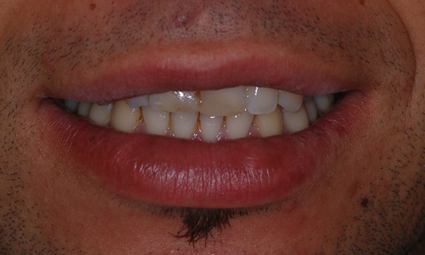
.
After
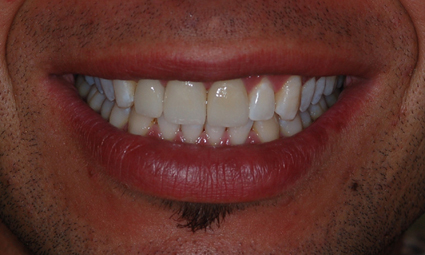
.
.
In which circumstances is it desirable to make a dental crown?
• When a large portion of the tooth is missing.
• When the tooth is discolored or misshapen
• When a tooth has had a root canal treatment and needs to be strengthened and protected from breakage
• When the patient’s tooth is very worn down because of severe Bruxism
.
.
What are dental crowns made of?
.
Crowns can be made from:
• Metal (gold or other metal alloys)
• Ceramic materials (such as porcelain)
• A combination of both (Porcelain-fused-to-metal dental crowns).
.
We will discuss the most appropriate crown for your situation.
.
Metal crowns
Gold crowns have set the standard by which all other crowns have been judged. They are still considered to be a functional material for restorations due both to their longevity, as well as their resistance to breakage and wear. They have been used for centuries, and are biocompatible. These are usually placed in the back of the mouth, so the tooth doesn’t show when you smile.
.
Full-porcelain dental crowns
These crowns have a brightness and translucency that makes them the most cosmetically pleasing out of all of the different types of dental crowns. These crowns are the premium options for front teeth. CEREC crowns are the brands we prefer, as we achive exact fit and esthetics.
.
Porcelain-fused-to-metal dental crowns
In these crowns, the core is made of metal, which is then surrounded by porcelain. These crowns can be a good possibility for either back or front teeth. They are very durable, yet at the same time lend an excellent cosmetic appearance.
Nowadays, with bonded CEREC crowns the final resistance is about the same.
.
.
When do old dental crowns need to be replaced?
• If it starts to feel loose. This could signify that the crown has decay beneath it.
• If tooth decay develops at the edge of the crown. If your oral hygiene is not adequate, a cavity could form.
• If the dental crown has heavily worn down
• If the dental crown has broken or cracked
• If the aesthetics of the crown have become unacceptable. Most frequently what happens is that a crown’s edge becomes visible and it has a grey appearance; or when the color of the dental crown no longer matches its neighboring teeth.
.
.
How can dental crowns strengthen teeth?
If a tooth is missing part of its structure, the tooth is weak; this is where crowns can help, as the crown acts as a splint that binds the tooth together. This strengthening capability is a very important feature of dental crowns, and one that makes them a very important option for restoration.
In contrast, other treatments such as metal fillings can have a weakening effect on the teeth in which they are placed. Dental fillings rely on a tooth’s remaining structure to hold and support them. Metal fillings, generally speaking, don’t strengthen a tooth and can’t protect a tooth from the forces generated by biting and chewing.
Furthermore, the repair of a large cavity often requires the removal of so much tooth structure that the overall strength of the tooth is diminished, in some cases greatly. This is because the structural integrity of the tooth has been compromised, and it is not as intact as it once was.
In these cases a crown will produce the most predictably successful outcome, in the long run.
.
.
What is the relationship between dental crowns and root canal treatment?
Some people seem to equate a tooth’s need for a dental crown with the need for root canal treatment as well. While both of these dental treatments may be required, they are entirely separate procedures. Not every tooth that needs a crown will necessarily need a root canal treatment; and not every tooth that needs a root canal treatment needs a crown.
.
.
What happens if you don’t protect a tooth with a dental crown?
It is of course not possible to know for sure what will happen in every case. There are, however, some possible situations that might develop for the tooth:
1- The tooth cracks in a way that is easily repaired
2- The tooth breaks, but it requires other types of dental work first before the dental crown can be made. (Ex: root canal treatment, periodontal surgery, etc).
3- The tooth breaks in a way in which it cannot be repaired.
.
.
Smile #8: Four porcelain crowns (6 hours required. Same day treatment)
.
Before
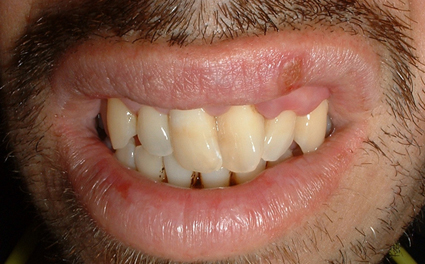
.
After
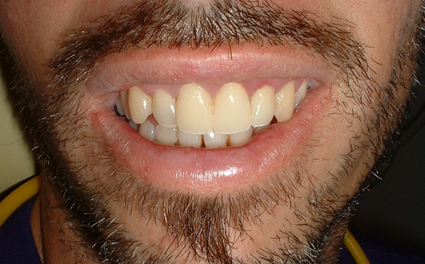
.
.
What precautions should be taken with a temporary dental crown?
Because temporary dental crowns are held in place by special “temporary” cement that is not as strong as other types of dental cement, you must take some precautions so as not to dislodge them.
•Reduce usage of the side of your mouth that contains the temporary crown.
•Try to keep sticky foods away from the temporary dental crown.
•Refrain from chewing hard foods with the temporary dental crown.
.
Usually, a tooth with a temporary dental crown can be brushed and flossed normally, with the following consideration. After flossing it may be best to remove the dental floss by way of letting loose of one end and then pulling it out to the side. Pulling the floss back out in a normal way may snag the temporary crown and pull it off the tooth.
If in the event that your temporary dental crown does manage to come loose you should contact your dentist’s office so that they can provide you with specific instructions, and also make arrangements for you to come in and have it re-cemented.
.
.
If you have any questions, please contact us.
We will be pleased to answer your inquiry.








